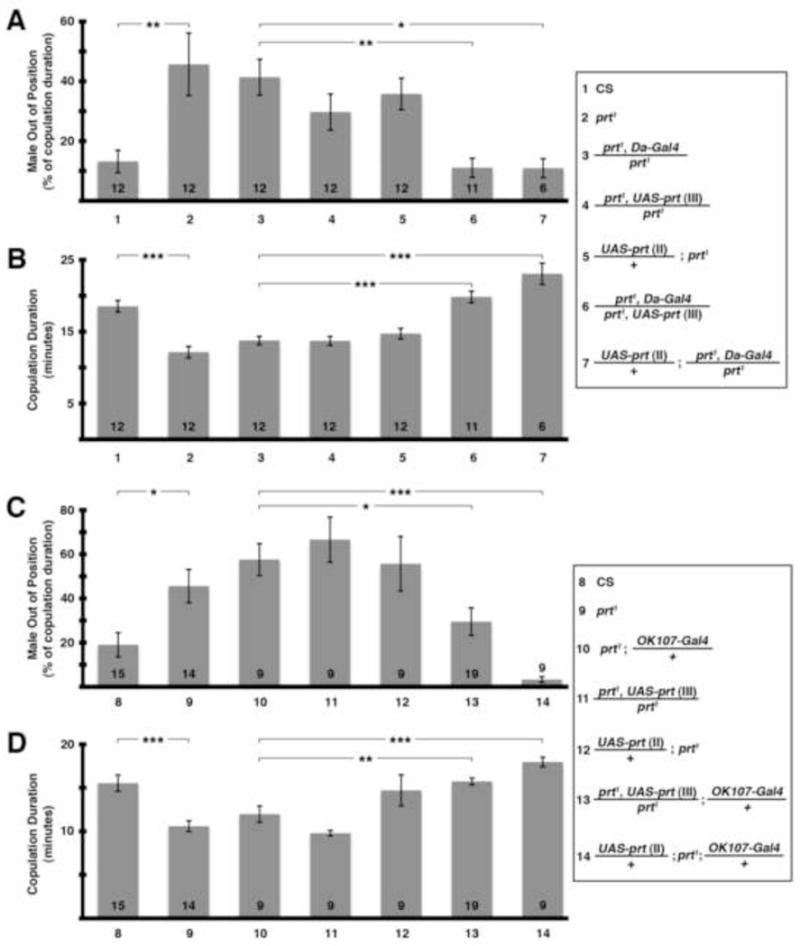Fig 7.

Genetic rescue of copulation defect (see legends on right for genotypes). A) The combination of the Da-Gal4 driver with a UAS-prt transgene rescued the copulation phenotype (columns 6 & 7, p < 0.01 and 0.05, respectively); driver or UAS-prt transgene alone did not (columns 3–5). B) prt1 mutants had significantly shorter copulation duration (columns 1 & 2, p < 0.001), rescued with Da-Gal4 plus UAS-prt transgenes (columns 6 & 7, p < 0.001 for both) but not driver or UAS-prt alone (columns 3–5). C) PRT transgenic expression with a MB driver (OK107-Gal4) rescued the prt1 copulation phenotype (columns 13 & 14, p < 0.05 and 0.001, respectively); driver or UAS-prt transgenes alone did not (columns 10–12). D) The short duration phenotype was similarly rescued using OK107-Gal4 plus UAS-prt transgenes (columns 13 & 14, p < 0.01 and 0.001, respectively). The UAS-prt transgene on the 2nd rescued in the absence of driver, presumably due to leaky PRT expression (column 12, p < 0.05 compared to prt1). * = p < 0.05, ** = p < 0.01, *** = p < 0.001, ANOVA with Bonferroni’s post test for multiple comparisons. Bars represent means ± SEMs. The n for each group is shown with each column.
